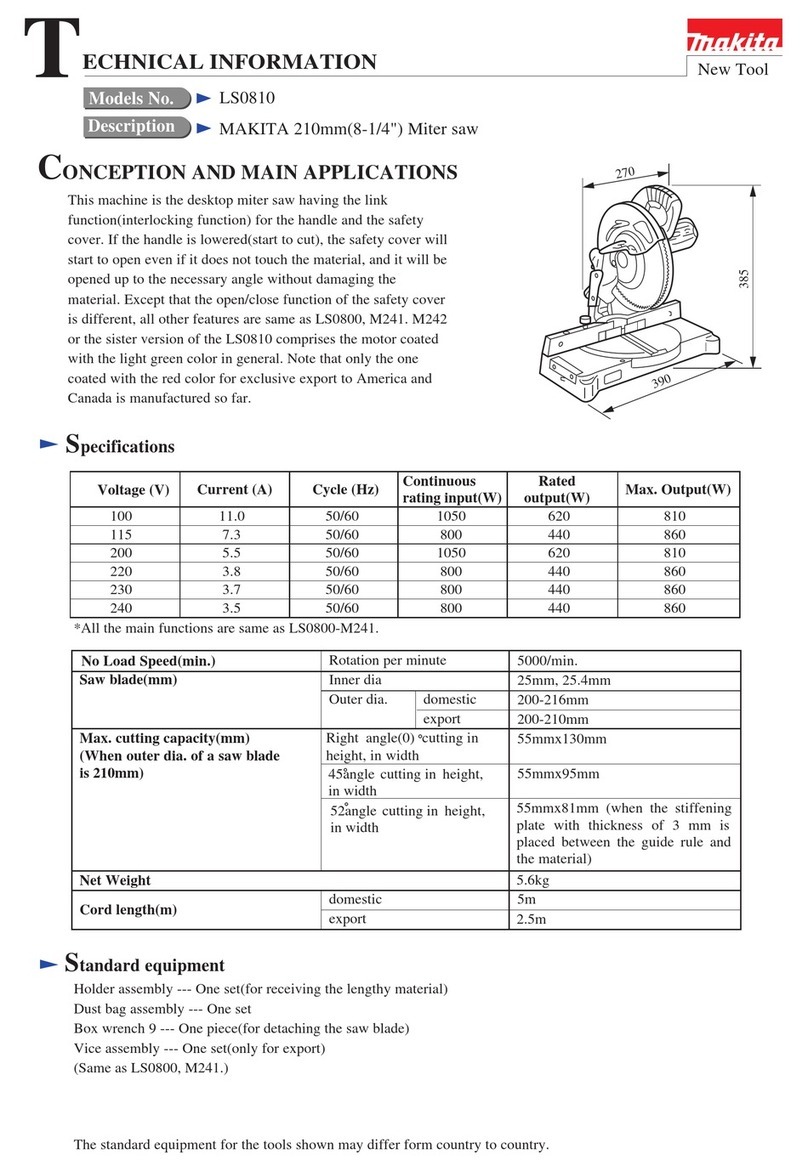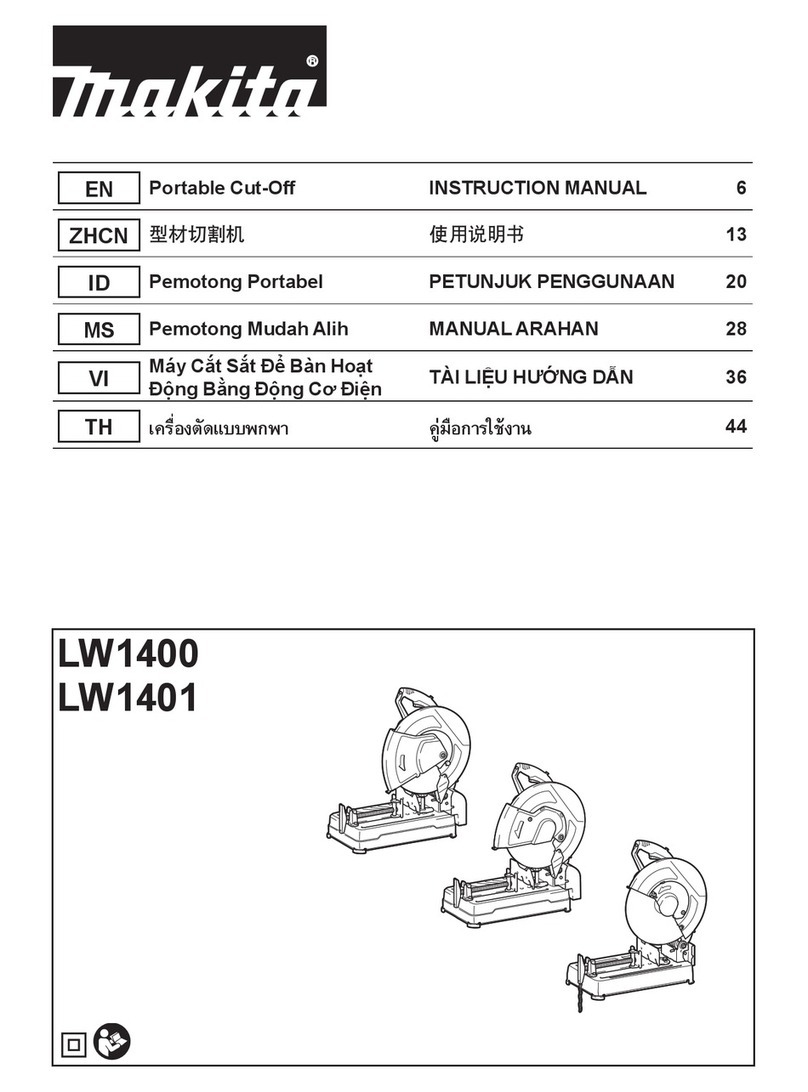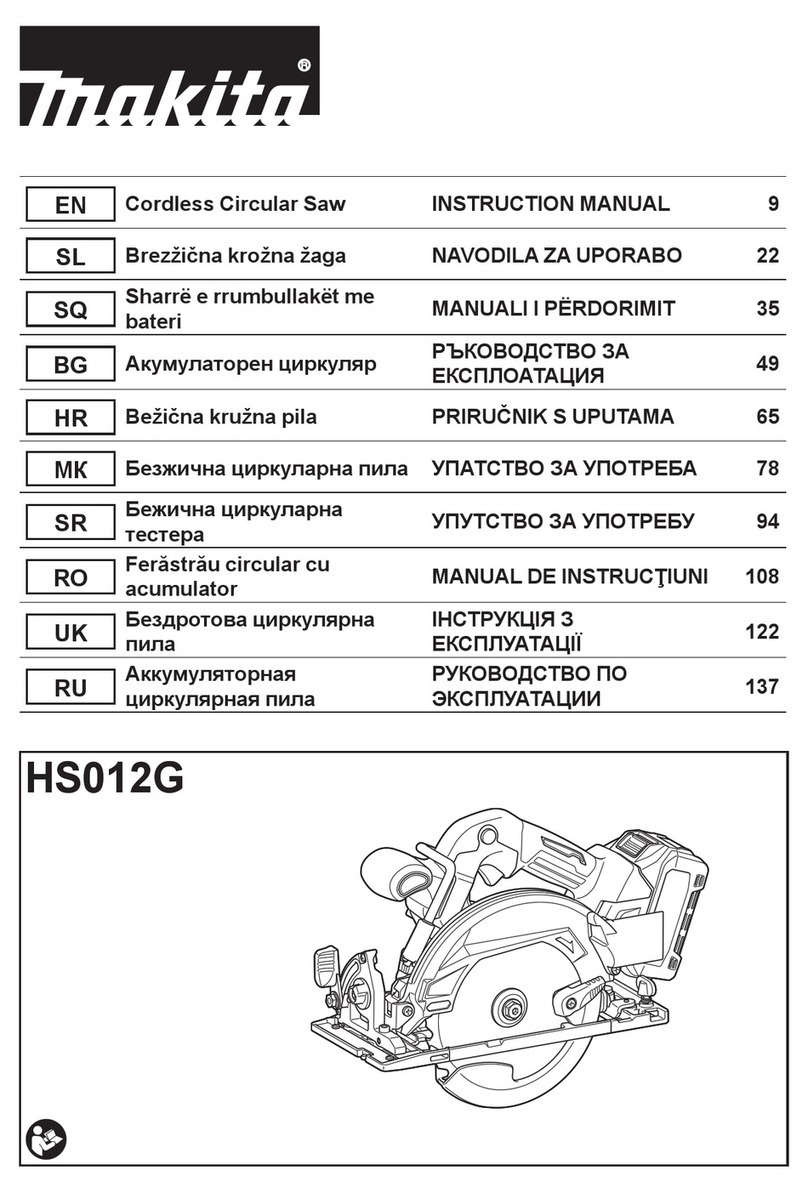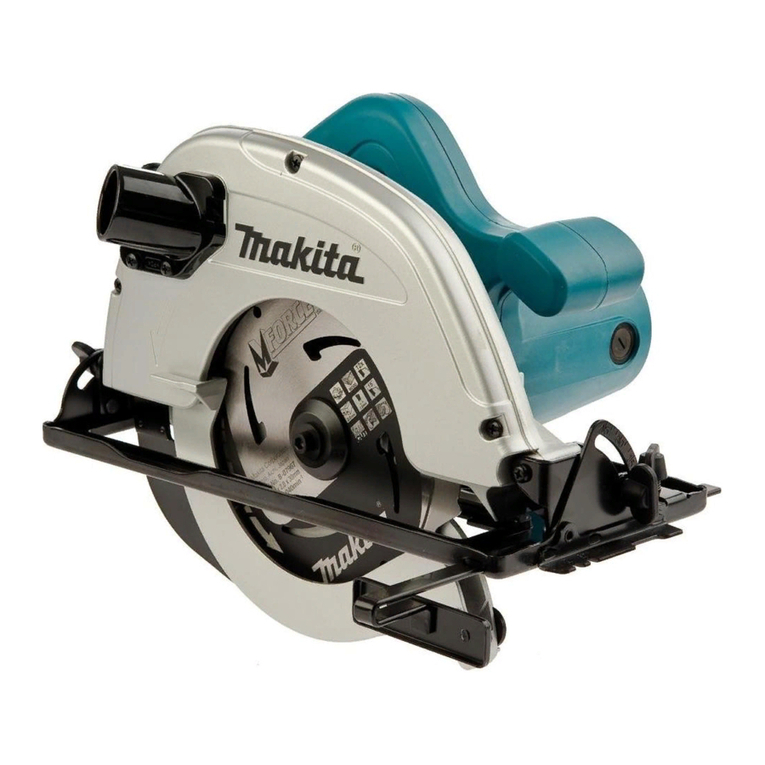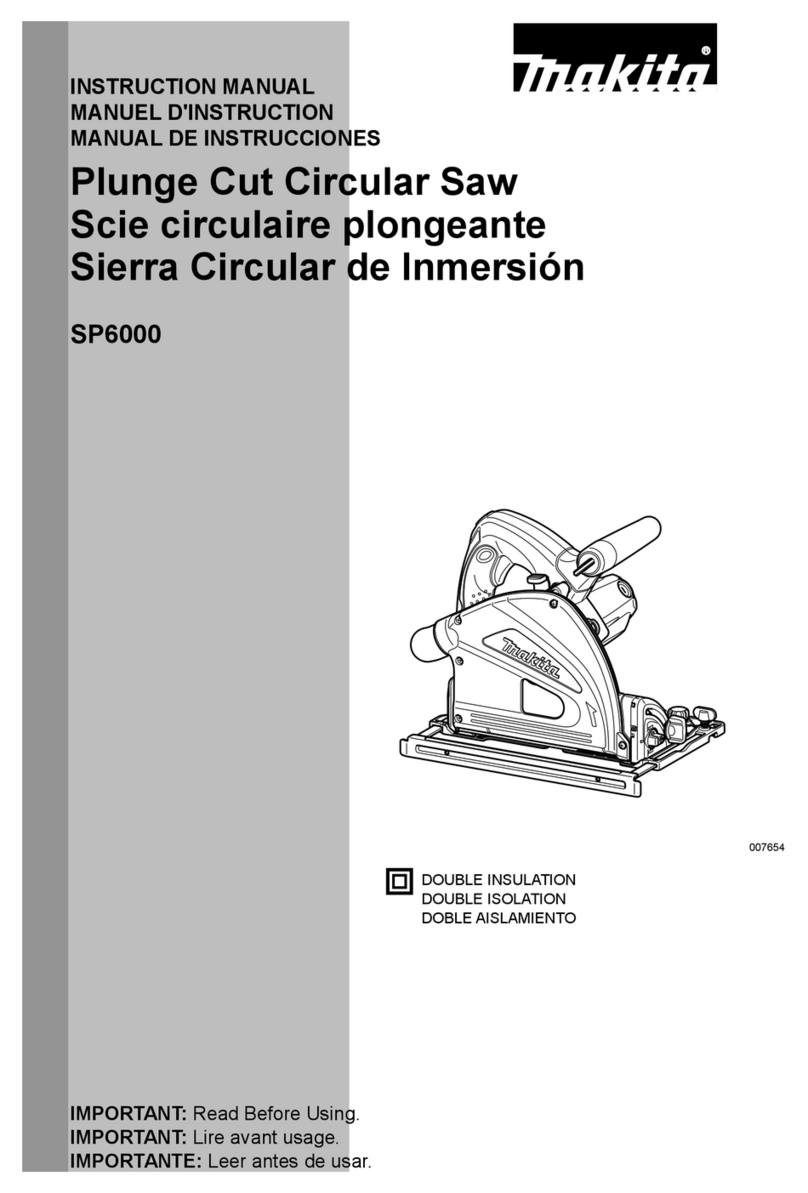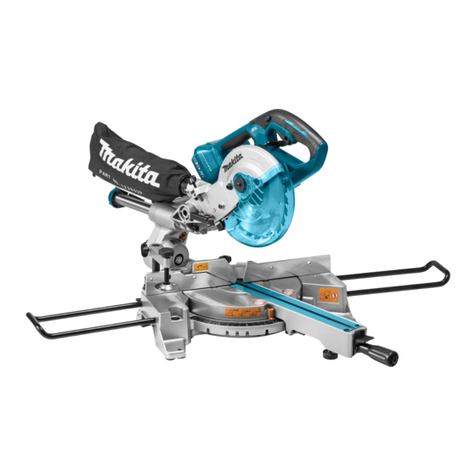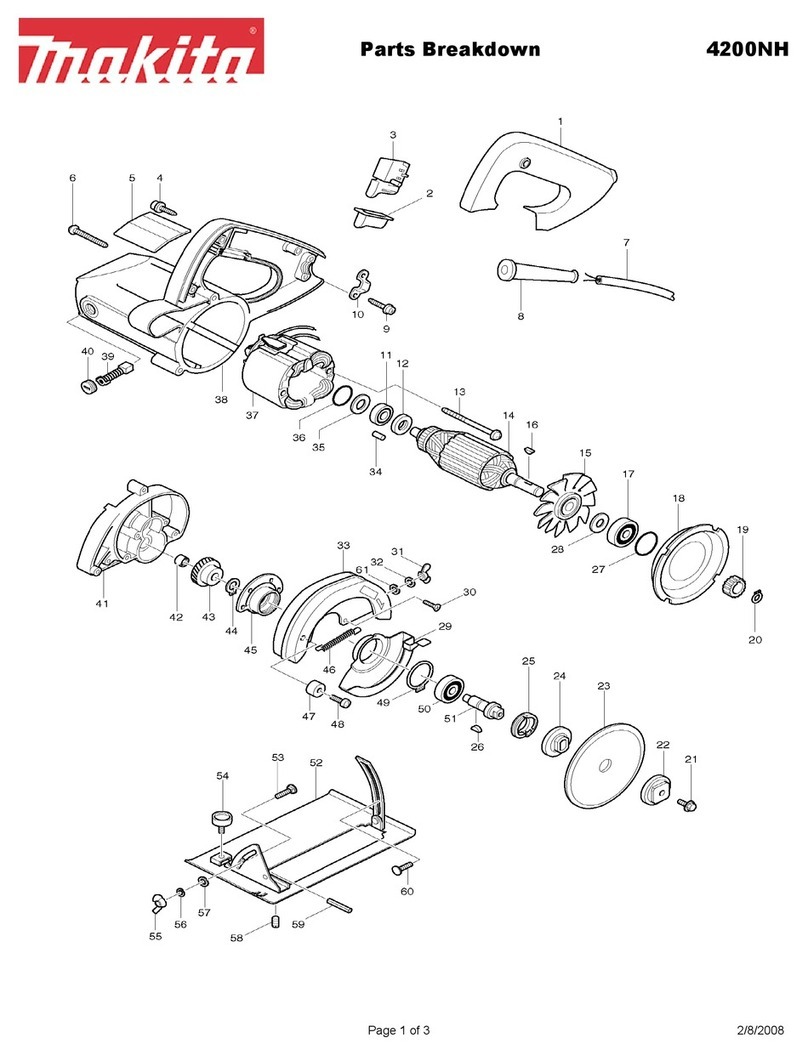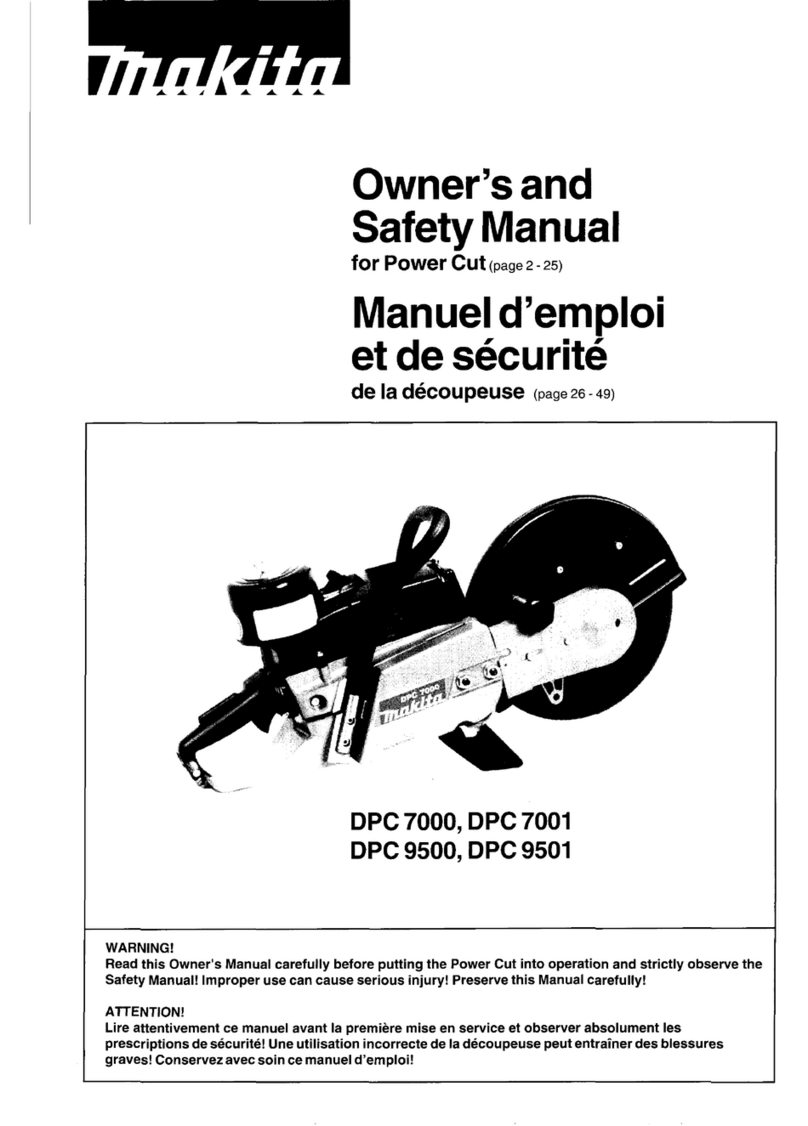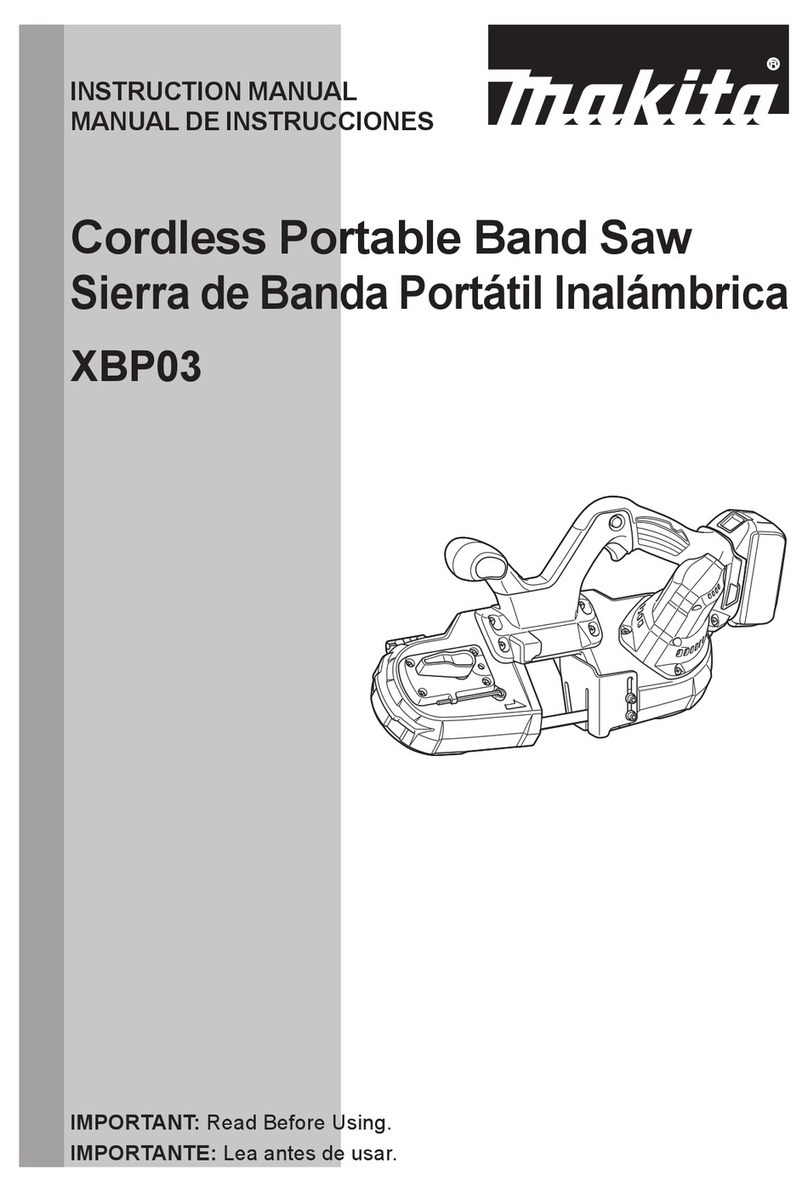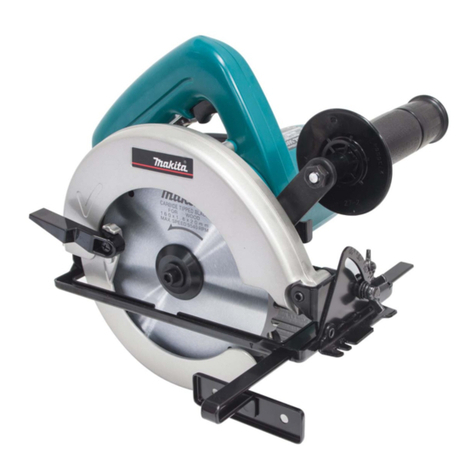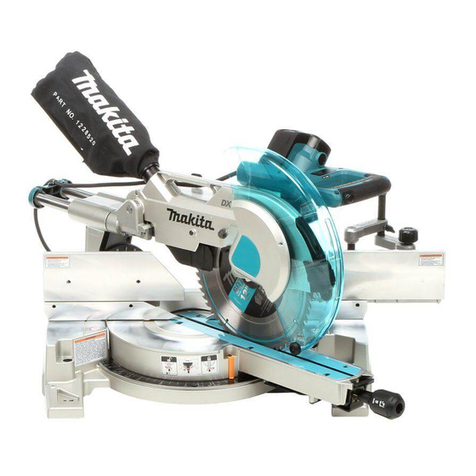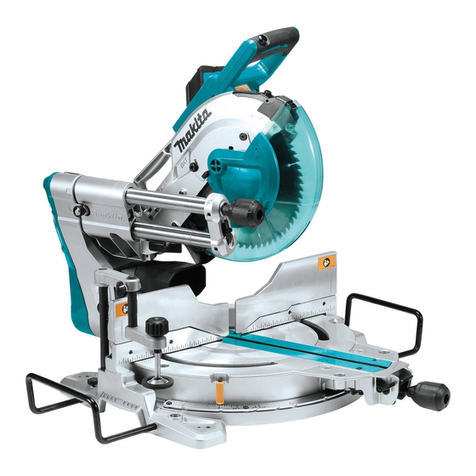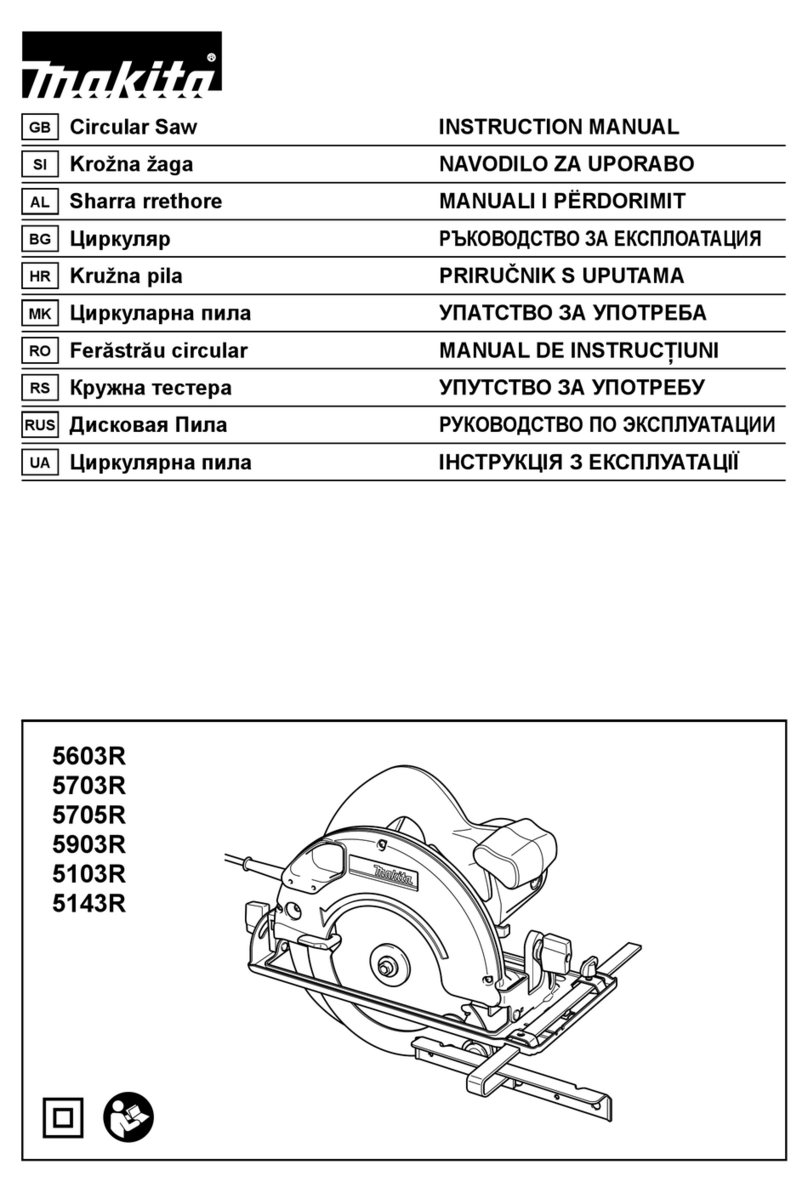
10 ENGLISH
8. Dress properly.
Do not wear loose clothing or jewellery, they can
be caught in moving parts. Rubber gloves and
non-skid footwear are recommended when work-
ing outdoors. Wear protecting hair covering to
contain long hair.
9. Use safety glasses and hearing protection.
Also use face or dust mask if the cutting operation
is dusty.
10. Connect dust extraction equipment.
If devices are provided for the connection of dust
extraction and collection facilities ensure these are
connected and properly used.
11. Do not abuse the cord.
Never carry the tool by the cord or yank it to dis-
connect it from the socket. Keep the cord away
from heat, oil and sharp edges.
12. Secure work.
Use clamps or a vice to hold the work. It is safer
than using your hand and it frees both hands to
operate the tool.
13. Do not overreach.
Keep proper footing and balance at all times.
14. Maintain tools with care.
Keep cutting tools sharp and clean for better and
safer performance. Follow instructions for lubrica-
tion and changing accessories. Inspect tool cord
periodically and if damaged have it repaired by an
authorized service facility. Inspect extension cords
periodically and replace, if damaged. Keep han-
dles dry, clean and free from oil and grease.
15. Disconnect tools.
When not in use, before servicing and when
changing accessories such as blades, bits and
cutters.
16. Remove adjusting keys and wrenches.
Form the habit of checking to see that keys and
adjusting wrenches are removed from the tool
before turning it on.
17. Avoid unintentional starting.
Do not carry a plugged-in tool with a nger on the
switch. Ensure switch is o when plugging in.
18. Use outdoor extension leads.
When tool is used outdoors, use only extension
cords intended for outdoor use.
19. Stay alert.
Watch what you are doing. Use common sense.
Do not operate tool when you are tired.
20. Check damaged parts.
Before further use of the tool, a guard or other part
that is damaged should be carefully checked to
determine that it will operate properly and perform
its intended function. Check for alignment of mov-
ing parts, free running of moving parts, breakage
of parts, mounting and any other conditions that
may aect its operation. A guard or other part
that is damaged should be properly repaired or
replaced by an authorized service center unless
otherwise indicated in this instruction manual.
Have defective switches replaced by an autho-
rized service facility. Do not use the tool if the
switch does not turn it on and o.
21. Warning.
The use of any accessory or attachment, other
than those recommended in this instruction man-
ual or the catalog, may present a risk of personal
injury.
22. Have your tool repaired by a qualied person.
This electric tool is in accordance with the relevant
safety requirements. Repairs should only be car-
ried out by qualied persons using original spare
parts, otherwise this may result in considerable
danger to the user.
23. Use of power supply via an RCD with a rated
residual current of 30 mA or less is always
recommended.
ADDITIONAL SAFETY RULES FOR
TOOL
SAVE THESE INSTRUCTIONS.
1. Wear eye protection.
2. Do not use the tool in presence of ammable
liquids or gases.
3. NEVER use the tool with an abrasive cut-o
wheel installed.
4. Check the blade carefully for cracks or damage
before operation. Replace cracked or damaged
blade immediately.
5. Use only saw blades recommended by the
manufacturer and which conform to EN847-1,
and observe that the riving knife must not be
thicker than the width of the cut by the saw
blade and not thinner than the body of the
blade.
6. Always use accessories recommended in this
manual. Use of improper accessories such as
abrasive cut-o wheels may cause an injury.
7. Select the correct saw blade for the material to
be cut.
8. Do not use saw blades manufactured from
high speed steel.
9. To reduce the emitted noise, always be sure
that the blade is sharp and clean.
10. Use correctly sharpened saw blades. Observe
the maximum speed marked on the saw blade.
11. Clean the spindle, anges (especially the
installing surface) and hex nut before install-
ing the blade. Poor installation may cause
vibration/wobbling or slippage of the blade.
12. Use saw-blade guard and riving knife for every
operation for which it can be used, including
all through sawing operations. Always install
the blade guard following the instructions
out-lined in this manual. Through sawing oper-
ations are those in which the blade cuts com-
pletely through the workpiece as in ripping or
cross cutting. NEVER use the tool with a faulty
blade guard or secure the blade guard with a
rope, string, etc. Any irregular operation of the
blade guard should be corrected immediately.
13. Immediately reattach the guard and riving
knife after completing an operation which
requires removal of the guard.
